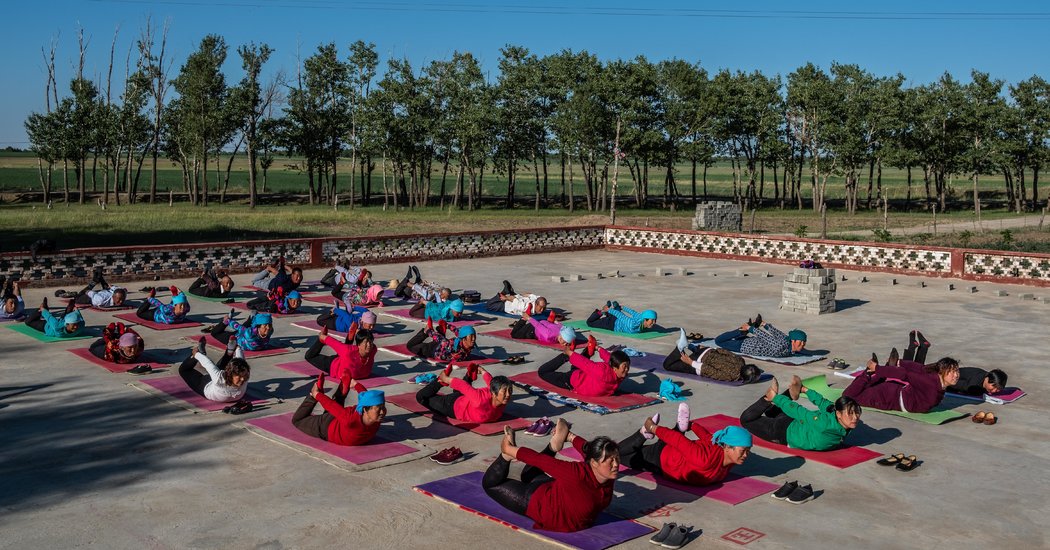 YUGOULIANG, CHINA, June 24, 2018 (New York Times): As the top Chinese official in this village, Lu Wenzhen had a problem. The young people had all moved away. The elderly farmers left behind were ailing. His aging hamlet needed money. Life. A spark. Then, two years ago, he watched a 60-year-old woman sit cross-legged for about half an hour on a kang, a stone bed common in China’s northern countryside. Mr. Lu suddenly had a eureka moment. “Yoga,” he said. It was an audacious plan that seemed out of place in Yugouliang, a village of fewer than 100 people in Hebei Province, far from the gyms and health food stores in places like Beijing and Shanghai. The average age of a Yugouliang resident is 65. They survive by tending to their cows and sheep and small plots of land.
YUGOULIANG, CHINA, June 24, 2018 (New York Times): As the top Chinese official in this village, Lu Wenzhen had a problem. The young people had all moved away. The elderly farmers left behind were ailing. His aging hamlet needed money. Life. A spark. Then, two years ago, he watched a 60-year-old woman sit cross-legged for about half an hour on a kang, a stone bed common in China’s northern countryside. Mr. Lu suddenly had a eureka moment. “Yoga,” he said. It was an audacious plan that seemed out of place in Yugouliang, a village of fewer than 100 people in Hebei Province, far from the gyms and health food stores in places like Beijing and Shanghai. The average age of a Yugouliang resident is 65. They survive by tending to their cows and sheep and small plots of land.
Those first few sessions, just a few residents turned up. Mr. Lu started off slow. First he taught them how to breathe through a singing exercise. Then he tried to take them through some simple, cross-legged moves. It didn’t take long for more people to join. Nor did it take long for them to try more ambitious poses. Encouraged to do more, Mr. Lu enrolled in a yoga course sponsored by the government. The Chinese government, which often suppresses spirituality and officially discourages mysticism, supports “yoga with Chinese characteristics” that excludes chanting and meditation from routines. This version is “removed from religion, demystified and localized for China,” said Mr. Lu, citing the government’s policy. From there, Mr. Lu got a certificate as a yoga judge and has since judged competitions.
Much more of this account as well as vivid photos and a short video at “source”.
Source: https://www.nytimes.com





